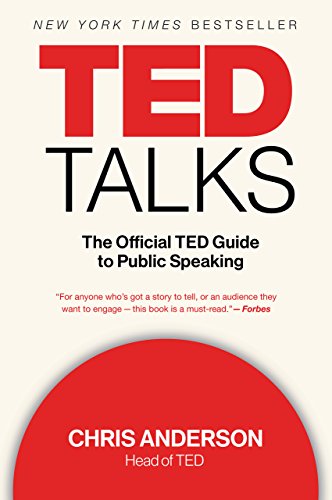 This is going to be an unusual review for this blog. Obviously I usually review YA fiction. But today, since I didn’t finish another book this week, I’m reviewing an adult fiction book that I think might still be of relevance to my readers. A lot of people have to get up on a stage—at work, in school, in church, wherever. This book could make you more comfortable doing so, and help you make a bigger impact.
This is going to be an unusual review for this blog. Obviously I usually review YA fiction. But today, since I didn’t finish another book this week, I’m reviewing an adult fiction book that I think might still be of relevance to my readers. A lot of people have to get up on a stage—at work, in school, in church, wherever. This book could make you more comfortable doing so, and help you make a bigger impact.
To make my boss happy (plus for some personal improvement), I joined Toastmasters at work. For those who don’t know, Toastmasters is an organization that is supposed to help you become a better public speaker and leader. You basically choose a pathway and make several assigned speeches on the way to reaching a leadership and speaking improvement goal. I gave my first speech in late February (on becoming a writer 🙂 ) and then before I could give my second speech, COVID-19 happened. So I thought I’d keep up with the learning and picked up the book TED Talks: The Official TED Guide to Public Speaking by Chris Anderson (“Head of TED”). If you don’t know about TED, you should: it’s an organization that runs conferences where people of all stripes give short talks. Check out ted.com to see some cool talks on almost everything imaginable.
Anyway, on to the book. Although Anderson frequently refers to TED-specific talks, he tries to generalize to other speaking venues, as well. He talks about the importance of a speech’s content being the best part of your speech, rather than obsessing about speech physical logistics, like where to stand and what to wear. It does address those things, because they do matter, but it has a major theme throughout: be yourself and be as comfortable as you can while up on stage. Much of the book (about 40%) is about making the talk itself solid and spectacular. Content matters. He talks about building ideas up and having a through line, avoiding common traps, connecting to people, narrating, explaining, persuading, and making revelations.
The next 45% talks about logistics, including whether or not to write a script and even possibly memorize it, or to try to wing it (hint: probably you shouldn’t wing it). He also addresses visuals, practicing, thinking about the impression you’re trying to make, mentally preparing, setting up, and having a real presence. The theme of being yourself and being comfortable is important in this section, too. Basically, you shouldn’t try to do something that will make you extra uncomfortable, since you’re (probably) already stretching out of your comfort zone to give a speech in the first place. Finally, he wraps up with some generalized thoughts on talks, and the importance he believes they have to our global, interconnected society.
So, I’d recommend this book over a lot of the other speech books out there because of the balance between content and logistics and the emphasis on comfort (many other books focus on logistics). If you think it might be helpful to get some tips on talking in front of people check this one out.